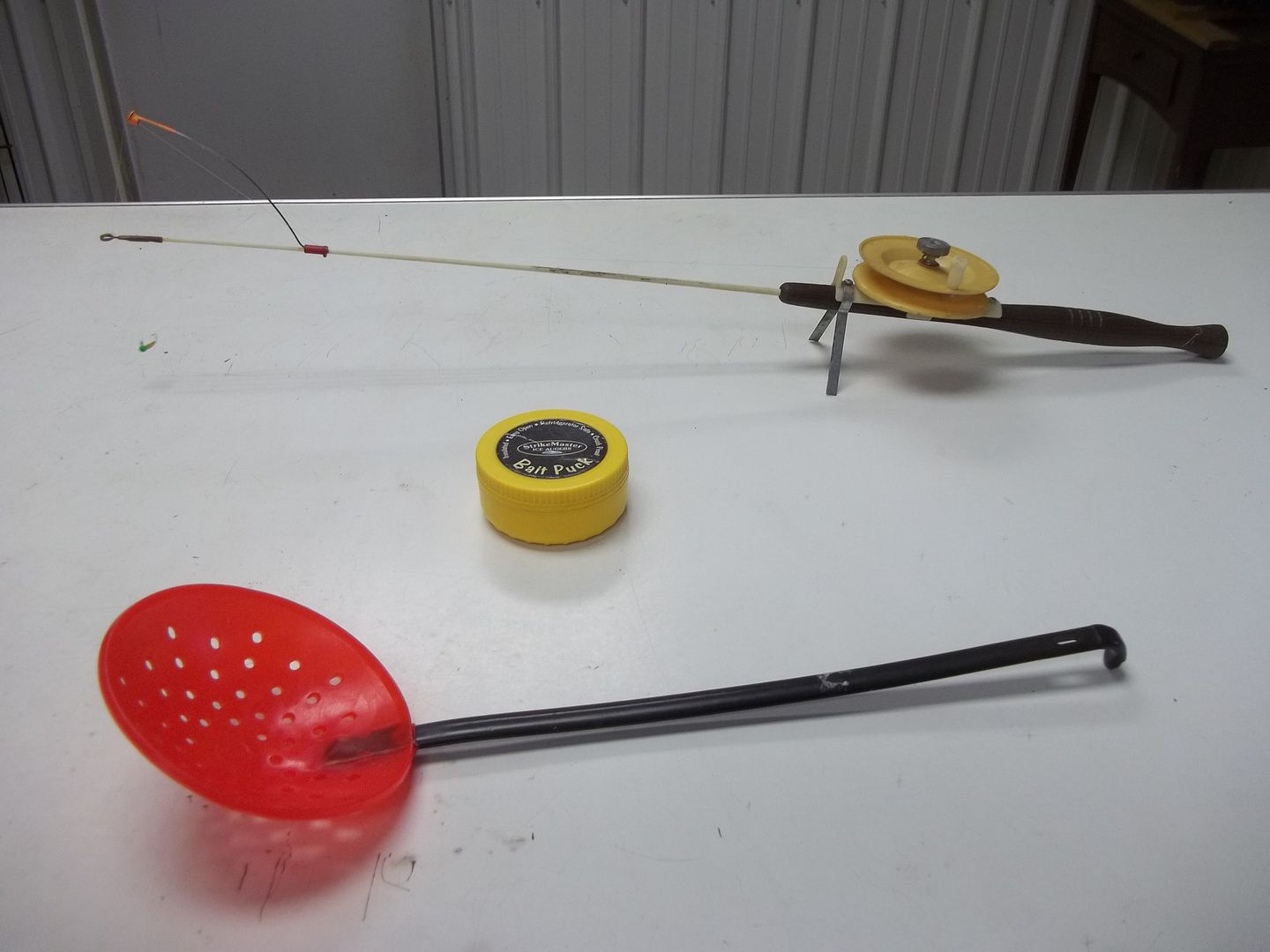Gear.
I've given a great deal of thought to this one. After all, most fishing styles and disciplines have a common denominator in the form of "you can go as crazy $$$ as you want"..... irregardless of the season or temperature. Ice fishing is absolutely no different.
Still, I believe at its core hard water angling exhibits a certain simplicity, or at least holds it roots close. Sure, the possibilities exist for underwater cameras, sonar, and three figure money spent on a custom, 24" rod. But while these items may enhance the fishing experience, are they absolutely essential for putting fish on the ice, especially in the beginning, when someone is just starting out?
So, after sorting through my seemingly ever-increasing stash of ice fishing gear, I have arrived at the five items I consider fundamental to success. Others may have differing opinions, and I would welcome their input.
1) It all begins with access to the water, and that means cutting a hole. The standard tool for that these days is an ice auger with replaceable blades, which come in electric, gas powered, and manual versions. However, I cut, or more aptly chopped, my holes for years using an axe, splitting maul, or my trusty spud bar. You may learn something about yourself when you're swinging a maul at the glassy surface that's holding you up, right in front of your feet. However you may learn even more about your companions...if they offer to take a turn with the maul, you're in good hands. If they scatter like a covey of quail at your first swing, AND the resulting crack that shoots across the surface, then remember what I said about tying yourself off with the safety rope cause you're liable to be on your own from that moment on.
These days I use a manual auger, and I have to say I don't miss the axe. For what they cost, and considering that 6" of ice is considered thick in my neck of the woods, they are a worthwhile investment. One word of caution however: ice auger blades are wickedly sharp. As in slice you open right now, blood-on-the-ice, stitches at the emergency room, kind of sharp. And, all blades are not created equal. I have bought replacement blades made in China that would not hold an edge, only to find out that the Swedish blades were far superior. Always check to see what you're buying.
2) A skimmer. After drilling or chopping a hole, you will find that it's full of slush. That's not always a bad thing, especially on bright days when a sudden shaft of sunlight streaming into the water can spook already wary fish, (some anglers will shove snow into the hole on a tough bite), but it does make it difficult to get your bait down through it. A skimmer looks like a kitchen utensil, as it's just a handle attached to a cupped piece with holes in it. You just dip the hole out, and you're good to go. I list this as essential only because I have resorted to using my hands for this task on days when I didn't have a skimmer....luckily the excruciating pain only lasts until your hands go numb. Unfortunately, this also means you can't bait your hook, retie a jig, smoke a cigarette, heed the call of nature, or any one of a dozen things you usually take for granted. Buy a skimmer. Trust me.
3) Finding bottom. A lot of ice fishing begins at the bottom of the pond/lake. That doesn't mean you will catch all of your fish there, only that finding bottom and working upward as necessary is common practice. If your jig/bait is heavy enough, you can use that to find your depth. If not, which happens a lot when you're using a size 18 ice fly, then you need a clip-on weight which is nothing more than a chunk of lead attached to an alligator clip. I should point out that the plumb bob method is most often utilized together with a rod/reel combination or mechanism that allows the angler to set his depth by limiting the amount of line that is let out, therefore ensuring a constant return to that depth on each drop.
4) Rod and reel, or something to wind your line onto. There are still anglers who will hook a fish and walk backwards until it clears the hole, old school style, but it seems to me like a good way to get your line in a hopeless tangle or frayed on the jagged ice. I started out with a "Schooley" rod and reel, and still use them for certain applications. It's just a fiberglass rod about 24" long, with a plastic "reel" to wind your line back onto, It features a crude, spring loaded friction adjustment, (not really a drag), a spring bobber at the rod tip, a stand to hold the rod off the ice, and not much more. And I've caught a lot of fish using them. Inexpensive and functional.
5) Enticements.....bait, jigs, plastics, or a combination thereof. An assortment of jigs in different sizes and colors, both vertical and horizontal...I tend to favor smaller offerings, especially for Bluegills. If you're after perch, walleye, crappie or bass, you may want to stock up on some jigging spoons, or raps. A lot of anglers, me included, like to add a little protein in the way of live bait. Waxworms, maggots, (spikes), mousies, or minnows are all popular, again depending on the target species.
Schooley rod, bait puck, ice skimmer.

Next time I will focus on upgrading your equipment and stepping up your game, but in my opinion these five basic items will absolutely enable you to catch fish. Hopefully, others will weigh in with their own interpretations.